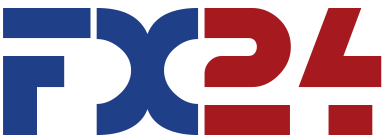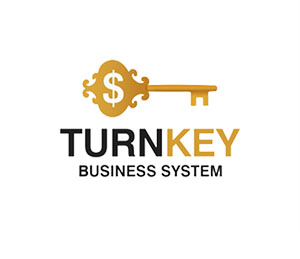
Grey Label Solutions
The financial markets are notoriously complex, with high barriers to entry for startups and established businesses alike. Regulatory hurdles, technological demands, and operational costs often deter newcomers.
Enter Grey Label providers —a hybrid solution that bridges the gap between White Label platforms and proprietary systems, offering businesses a streamlined path to market entry.
This article explores how Grey Label providers simplify access to financial markets, their unique advantages, and why they are becoming a preferred choice for firms aiming to balance customization with cost-effectiveness.
Enter Grey Label providers —a hybrid solution that bridges the gap between White Label platforms and proprietary systems, offering businesses a streamlined path to market entry.
This article explores how Grey Label providers simplify access to financial markets, their unique advantages, and why they are becoming a preferred choice for firms aiming to balance customization with cost-effectiveness.

Grey Label Solutions
What Are Grey Label Providers?
Grey Label solutions occupy a middle ground between White Label (fully rebranded, turnkey platforms) and proprietary development (custom-built systems). They provide businesses with pre-built infrastructure—such as trading platforms, risk management tools, and liquidity access—while allowing varying degrees of customization.Unlike White Label, which locks users into a standardized product, Grey Label offers flexibility to modify features, integrate third-party tools, or scale operations.
Key Components of Grey Label Solutions :
Trading Platforms : MT4/MT5, cTrader, or custom interfaces.
Liquidity Integration : Connections to banks, exchanges, and liquidity providers.
Compliance Tools : KYC/AML checks, transaction monitoring, and reporting.
Back-Office Support : Client management, CRM integration, and analytics.
How Grey Label Providers Simplify Market Entry
1. Cost Efficiency: Reducing Upfront InvestmentBuilding a proprietary trading platform from scratch can cost hundreds of thousands of dollars and take years. Grey Label providers eliminate these barriers by offering:
Pay-as-you-go models : Scale costs with business growth.
Shared infrastructure : Avoid expenses for servers, licenses, and maintenance.
No development team required : Leverage the provider’s existing technology stack.
For example, a fintech startup can launch a brokerage with a Grey Label solution for under $20,000, compared to $500,000+ for in-house development.
2. Speed to Market: Launch in Weeks, Not Months
Grey Label providers handle technical setup, regulatory integrations, and testing. Businesses can focus on branding, marketing, and client acquisition. A typical launch timeline ranges from 4–8 weeks , versus 6–12 months for proprietary systems.
Case Study : A European brokerage used a Grey Label provider to launch a CFD trading platform in 6 weeks, capturing early momentum in a volatile market.
3. Regulatory Compliance Made Simple
Navigating global regulations (MiFID II, SEC, FCA) is daunting. Grey Label providers:
Embed compliance into platforms (e.g., automatic trade reporting).
Offer licenses for jurisdictions like Cyprus (CySEC) or the UK (FCA).
Update systems to reflect changing laws (e.g., ESMA leverage caps).
4. Customization Without Complexity
Grey Label solutions balance standardization with flexibility:
UI/UX Customization : Brand colors, logos, and client dashboards.
Feature Add-Ons : Integrate social trading, copy-trading, or AI analytics.
API Access : Connect CRM tools, payment gateways, or blockchain protocols.
Example : A crypto exchange used a Grey Label platform to add staking and DeFi features, differentiating itself in a crowded market.
5. Scalability for Growth
As businesses expand, Grey Label infrastructure adapts:
Multi-Asset Support : Add forex, stocks, commodities, or digital assets.
Global Reach : Localize platforms for regional markets (e.g., Arabic for MENA, Mandarin for Asia).
High-Volume Handling : Process thousands of trades per second during peak activity.
Grey Label vs. White Label: Key Differences
While both models offer pre-built solutions, Grey Label stands out in:Flexibility : Modify code, integrations, and workflows.
Ownership : Retain control over branding and client data.
Cost Structure : Lower long-term fees compared to White Label licensing.
When to Choose Grey Label :
You need a balance of customization and speed.
Your business plans to scale into multiple asset classes or regions.
You lack the expertise to manage proprietary development.
Future Trends in Grey Label Solutions
AI Integration : Machine learning for fraud detection and personalized client experiences.
Blockchain Adoption : Tokenization of assets and decentralized liquidity pools.
Embedded Finance : Grey Label platforms powering banking-as-a-service (BaaS) offerings.
Sustainability Metrics : ESG-compliant trading tools for eco-conscious investors.
Conclusion
Grey Label providers are democratizing access to financial markets, enabling businesses to innovate without prohibitive costs or technical complexity. By combining the speed of White Label with the flexibility of proprietary systems, they empower firms to focus on growth, client acquisition, and differentiation.
In an era where agility defines success, Grey Label solutions are not just a shortcut—they’re a strategic imperative for forward-thinking firms.
Key Takeaway : Whether you’re a startup disrupting fintech or a bank expanding into digital assets, Grey Label solutions offer the perfect blend of efficiency, compliance, and scalability. The future of finance is modular—embrace it.
#GreyLabel #FintechInnovation #FinancialMarkets #BrokerageSolutions
Grey Label providers are democratizing access to financial markets, enabling businesses to innovate without prohibitive costs or technical complexity. By combining the speed of White Label with the flexibility of proprietary systems, they empower firms to focus on growth, client acquisition, and differentiation.
In an era where agility defines success, Grey Label solutions are not just a shortcut—they’re a strategic imperative for forward-thinking firms.
Key Takeaway : Whether you’re a startup disrupting fintech or a bank expanding into digital assets, Grey Label solutions offer the perfect blend of efficiency, compliance, and scalability. The future of finance is modular—embrace it.
#GreyLabel #FintechInnovation #FinancialMarkets #BrokerageSolutions









Report
My comments